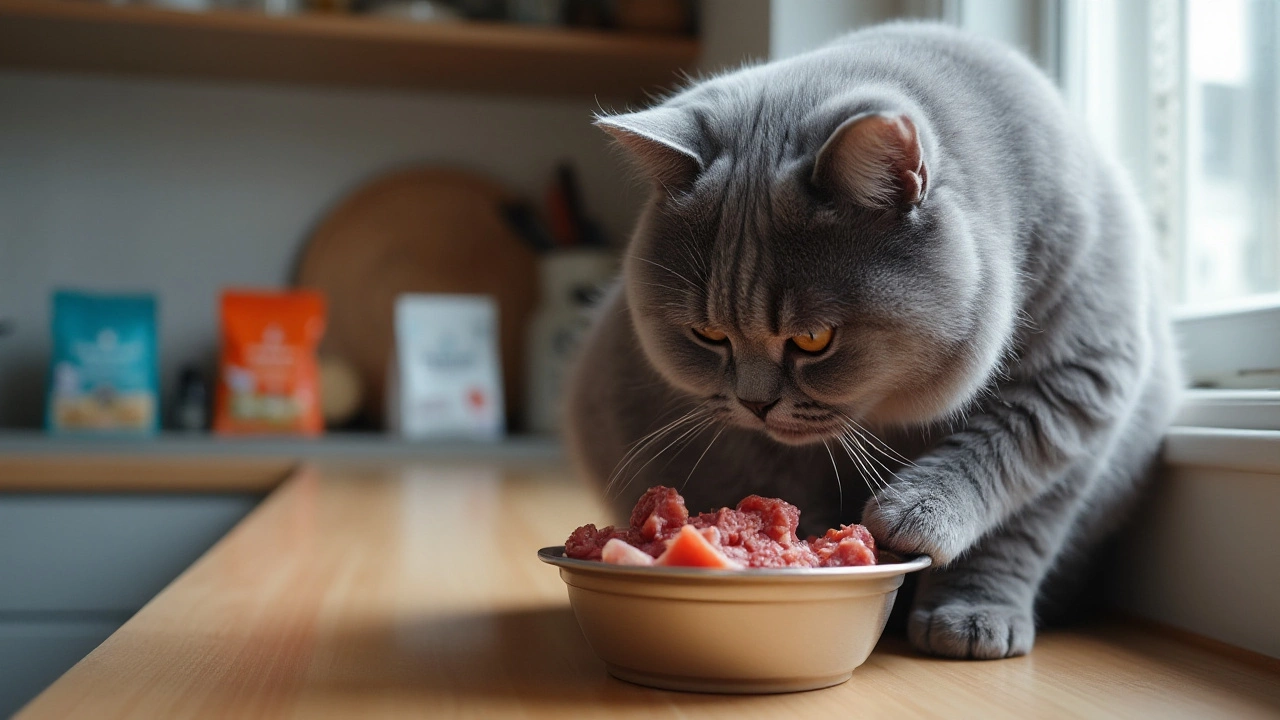Feeding Cats Made Easy: What Every Cat Owner Should Know
Feeding your cat might feel like a mystery, but it doesn’t have to be. Whether you’ve got a picky indoor mouser or a laid‑back senior, the right food and routine can keep them thriving. Below are the basics you can start using today.
Choosing the Right Food
First off, look at the label. A good cat food will list a quality animal protein—like chicken, turkey, or fish—near the top. Cats are obligate carnivores, so they need real meat, not just fillers. If you see lots of corn, wheat, or soy in the first three ingredients, skip it.
Next, think about life stage. Kittens need higher calories and taurine, while adult cats do fine with a balanced maintenance formula. Seniors often benefit from joint‑support nutrients and lower calorie levels to prevent weight gain. Most brands label their bags as "kitten," "adult," or "senior," making it easy to pick the right one.
Wet vs. dry is a common debate. Wet food adds moisture, which helps prevent urinary issues—a big plus for indoor cats who don’t drink enough water. Dry kibble is convenient and helps keep teeth clean, but it shouldn’t be the only source of moisture. A mix of both works for most owners: one or two wet meals a day plus a small portion of kibble.
How to Feed Your Cat Right
Set a schedule and stick to it. Cats love routine, so feeding at the same times each day reduces anxiety and curbs begging. Most adult cats do well with two meals—morning and evening—while kittens need three to four smaller feeds.
Measure portions. Overfeeding leads to obesity, which brings joint pain, diabetes, and shorter life spans. Use the feeding guide on the bag as a starting point, then adjust based on your cat’s weight and activity level. A handy trick: weigh the food with a kitchen scale for accuracy.
Watch the bowl. Clean the dish daily to prevent bacteria buildup. Stainless steel or ceramic dishes are best—they don’t hold odors like plastic can, which might turn a finicky eater off.
Don’t forget treats. A few bites of cat‑friendly treats are fine, but they should make up no more than 10% of daily calories. Look for treats that list meat as the first ingredient and avoid those loaded with artificial flavors.
Finally, keep water fresh. Even if you feed wet food, cats still need a water source. Some cats prefer a running fountain over a stagnant bowl—try both and see what your kitty likes.
By picking a high‑quality food, setting a consistent schedule, and monitoring portions, you’ll give your cat the nutrition it needs without the guesswork. Your furry friend will thank you with extra purrs and a longer, healthier life.
The Ultimate Guide to Feeding Your Cat: Tips for Healthy and Happy Felines
Choosing the best food for your cat is crucial for their health and well-being. Cats are obligate carnivores, meaning their diet must be rich in proteins. This article explores various cat food options, from dry kibble to raw diets, shedding light on the nutritional needs of felines. Tips on reading labels and choosing the best brands help owners ensure their cats receive balanced meals. Understanding your cat's unique dietary needs will keep them healthy and satisfied.
